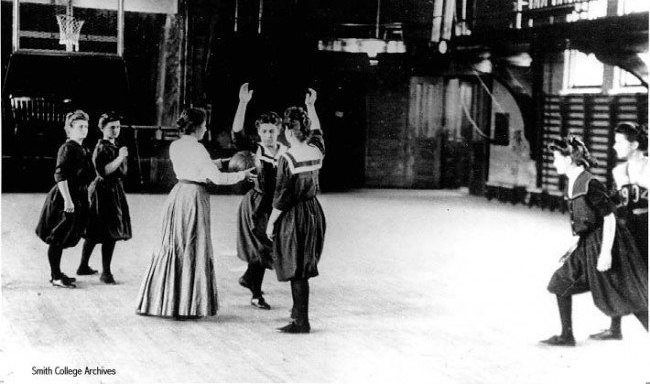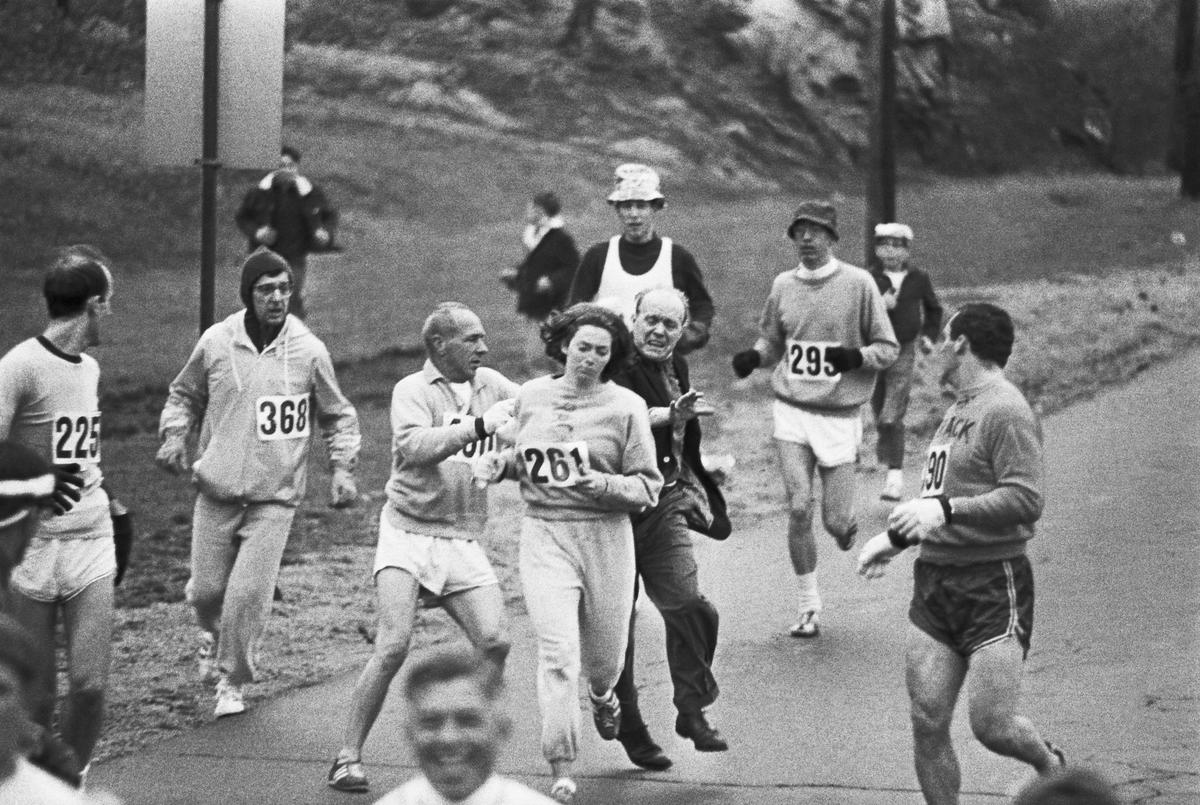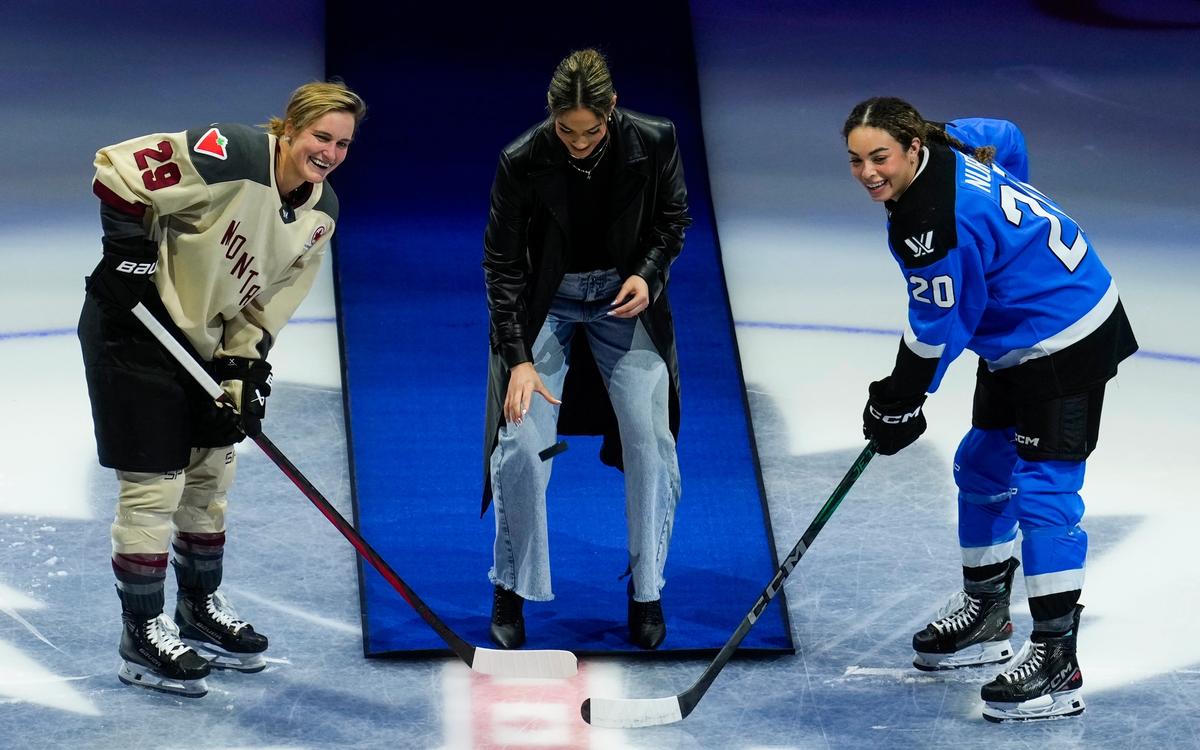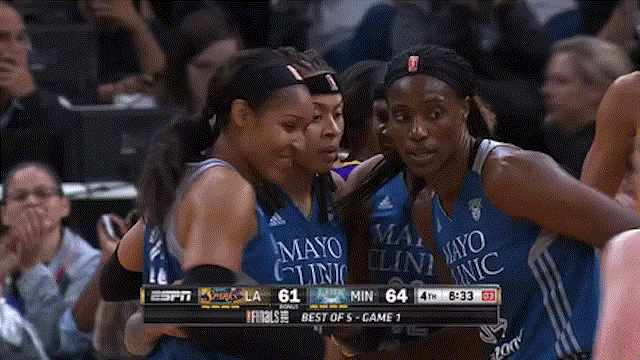Celebrating Women’s History Month

🏀 History on the hardwood
To tip things off, we’re taking it back to the 19th century. The first women’s college basketball game was held in 1893 when Senda “the Mother of Women’s Basketball” Berenson, a gymnastics instructor at Smith College in Western Massachusetts, organized a game between freshmen and sophomores.
- Berenson had read about the new game, invented less than two years earlier by Dr. James Naismith, and decided to try it out at the women’s college.
- Well, it proved to be a success. Eight hundred female students looked on (men weren’t allowed to attend) as the sophomores won 5–4. An early example of the case for investing in women’s sports.
Berenson’s idea quickly spread across the country, and the first women’s intercollegiate game was held in 1896, with Stanford defeating the University of California Berkeley 2–1. In 1901, Berenson’s rules were published as a women’s basketball guide, and she spent much of her life promoting the game.
- And in 1985, 31 years after her death, Berenson was the first woman enshrined in the Basketball Hall of Fame. A true trailblazer.
🏃♀️ Who run the world?

There’s a long history of women making (literal) strides toward equality in running. Once again, let’s begin in the 19th century. Women were barred from competing in the 1896 Summer Olympics, but Greek runner Stamata Revithi had other plans.
- One day after the men completed the “official” marathon, Revithi ran the same course, but was not permitted entry into the Olympic stadium to cross the finish line.
- While Revithi’s first-ever women’s Olympic marathon might not have made the books, history remembers her incredible achievement — which she reportedly said she would’ve completed faster had she not stopped to shop for oranges along the way. Legend.
It would take another 88 years for women to be allowed to compete in the Olympic marathon, with American Joan Benoit Samuelson blowing the competition away to win the inaugural gold at the 1984 LA Games.
Running might be a solo sport, but it took a team of women working together to get Samuelson to that historic start line. Friend of The GIST Kathrine Switzer — who became the first woman to officially run the Boston Marathon in 1967 (despite being attacked by the race director) — created a series of women’s races to help campaign for the addition of the women’s Olympic marathon.
- Women had been barred from road races since 1961, but in 1972, the Amateur Athletic Union (AAU) relaxed the rules and allowed women to officially compete.
However, under the AAU rules, women could not compete with men. At the 1972 NYC Marathon, female racers were slated to begin 10 minutes before the men. To protest this rule, six women spent those minutes sitting at the starting line, then standing to begin the race with the men.
- The AAU later scrapped the policy, and countless women have burst through countless finish lines (and often done it better than the men) ever since.
⚽️ Power on the pitch

In 1991 — 61 years after the inaugural men’s World Cup — FIFA finally sanctioned the first-ever Women’s World Cup (WWC). Why the delay? Sexism, of course. Firstly, many countries had bans on women’s soccer.
- With some bans lifted throughout the 1970s, unofficial iterations of a global women’s tournament preceded the 1991 FIFA-sanctioned competition. But Norwegian footballer Ellen Wille wasn’t going to settle for less.
- In 1986, she became the first woman to testify in front of the FIFA Congress, calling for the creation of a WWC and for the women’s game to be added to the Olympics.
After a successful invitational tournament in 1988, China hosted the first WWC in 1991, but it wasn’t without controversy. For one, it wasn’t even called the World Cup; instead, it was deemed the “1st FIFA World Championship for Women’s Football for the M&M's Cup.” Doesn’t exactly roll off the tongue.
- Plus, matches were only 80 minutes, as opposed to 90 minutes for the men. “They were afraid our ovaries were going to fall out if we played 90,” USWNT captain April Heinreichs joked in response.
Ovaries intact, the USWNT was the first to hoist the cup, defeating Norway 2–1 in the final. And while that inaugural victory largely flew under the radar, it paved the way for the game-changing ’99ers squad eight years later.
- Hosted in the U.S., the 1999 final drew over 90k fans — the highest attendance for a women’s sports event ever at the time. A thrilling penalty shootout win over China, the sports bra seen around the world…the rest is history.
📈 The present day

From the 19th century to the ’99ers, we’ve covered major milestones in women’s sports. Now, let’s highlight the history being made today.
🏒 PWHL: Just over two months into its inaugural season, the PWHL has already broken the all-time attendance record for a women’s pro hockey game…thrice. Combine that with impressive viewership numbers, historic partnerships, and an overwhelming sense of momentum around the sport’s new sustainable, cross border league, and it’s proof that if you build it, they will come.
🏀 College basketball: No. 6 Iowa women’s basketball star Caitlin Clark is on the precipice of history, 18 points shy of the all-time NCAA basketball scoring record (men’s or women’s) ahead of today’s 1 p.m. ET regular-season finale vs. No. 2 Ohio State.
- But the eyeballs on Clark’s record chase are part of a larger trend in women’s college hoops, with last year’s March Madness final notably averaging 9.92M viewers, the most watched women’s college game…ever.
🏐 Volleyball: One of the most popular high school sports for girls, it’s no wonder there are now three women’s professional volleyball leagues in North America: Athletes Unlimited (AU), the Pro Volleyball Federation (PVF), and League One Volleyball (LOVB), which launches later this year.
- And in 2023, Nebraska volleyball set the world record for women’s sports attendance when the five-time collegiate national champion Huskers hosted Omaha. Aces all around.
⚽ Soccer: The 2023 FIFA Women’s World Cup more than delivered on memorable moments on and off the pitch. From jaw-dropping Cinderella runs to record-setting crowds, the beautiful game continues to reach new heights and should keep climbing with the NWSL’s recent media rights deal.
- The largest of its kind for a women’s league, the groundbreaking deal shows that there is demand not just for soccer, but for the greater women’s sports landscape.

